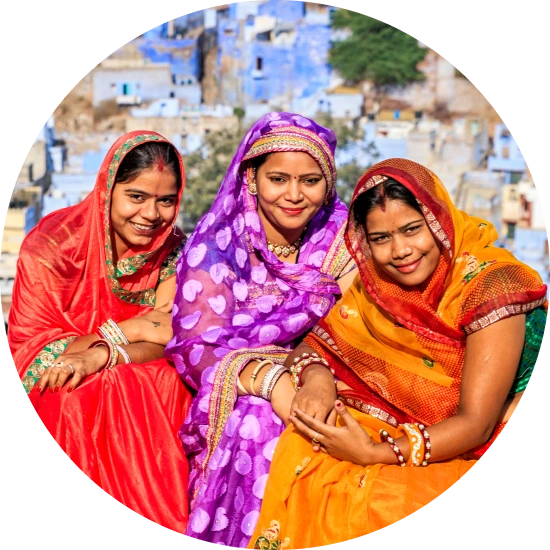Explore the Family Name To
How common is the last name To in the United States?
According to the Decennial U.S. Census, the popularity of the surname "To" has seen a significant increase between 2000 and 2010. In the year 2000, it was ranked as the 4649th most common surname, with 6979 individuals carrying the name. By 2010, it had climbed to the 3979th spot, representing a 14.41% increase in rank. The count of people with the name "To" also grew by 28.01%, from 6979 to 8934, within the same period. Likewise, the proportion per 100k people increased by approximately 17% to reach 3.03.
| 2000 | 2010 | Change | |
|---|---|---|---|
| Rank | #4,649 | #3,979 | 14.41% |
| Count | 6,979 | 8,934 | 28.01% |
| Proportion per 100k | 2.59 | 3.03 | 16.99% |
Race and Ethnicity of people with the last name To
The Decennial U.S. Census also provides insights into the ethnic identity associated with the surname "To." In both 2000 and 2010, the vast majority of those with this surname identified as Asian/Pacific Islander, accounting for over 94% of all instances. There was a slight increase of 0.62% in this group over the decade. On the other hand, the percentage identifying as having two or more ethnicities decreased by 31.84%, while those who identified as White saw a small decline of 7.98%. Interestingly, the proportion of people with the surname "To" who identified as Hispanic increased by 34.74% during this period. There were no cases of individuals with this surname identifying as Black or American Indian and Alaskan Native in either census year.
| 2000 | 2010 | Change | |
|---|---|---|---|
| Asian/Pacific Islander | 94.47% | 95.06% | 0.62% |
| White | 2.13% | 1.96% | -7.98% |
| Two or More Races | 2.01% | 1.37% | -31.84% |
| Hispanic | 0.95% | 1.28% | 34.74% |
| Black | 0% | 0% | 0% |
| American Indian and Alaskan Native | 0% | 0% | 0% |
To ancestry composition
23andMe computes an ancestry breakdown for each customer. People may have ancestry from just one population or they may have ancestry from several populations. The most commonly-observed ancestry found in people with the surname To is Chinese, which comprises 44.0% of all ancestry found in people with the surname. The next two most common ancestries are Vietnamese (37.5%) and British & Irish (4.5%). Additional ancestries include Chinese Dai, French & German, Indonesian, Thai, Khmer & Myanma, Korean, and Japanese.
Ready to learn more about your ancestry? Get the most comprehensive ancestry breakdown on the market by taking our DNA test. Shop 23andMe
| ANCESTRY BREAKDOWN | COMPOSITION |
|---|---|
| Chinese | 44.0% |
| Vietnamese | 37.5% |
| British & Irish | 4.5% |
| Other | 14.1% |

Possible origins of the surname To
Your DNA provides clues about where your recent ancestors may have lived. Having many distant relatives in the same location suggests that you may all share common ancestry there. Locations with many distant relatives can also be places where people have migrated recently, such as large cities. If a large number of individuals who share your surname have distant relatives in a specific area, it could indicate a connection between your surname and that location, stemming from either recent ancestral ties or migration.
Based on 23andMe data, people with last name To have recent ancestry locations in China and Vietnam.
| RECENT ANCESTRY Location | Percentage |
|---|---|
| Guangdong, China | 67.00% |
| Fujian, China | 65.90% |
| Zhejiang, China | 64.20% |
| Jiangsu, China | 63.60% |
| Shanghai, China | 63.60% |
What To haplogroups can tell you
Haplogroups are genetic population groups that share a common ancestor on either your paternal or maternal line. These paternal and maternal haplogroups shed light on your genetic ancestry and help tell the story of your family.
The top paternal haplogroup of people with the surname To is O-M307.1, which is predominantly found among people with East Asian & Indigenous American ancestry. Haplogroup O-M307.1 is descended from haplogroup O-M1359. Other common haplogroups include O-F8 and O-M88, which are predominantly found among people with East Asian & Indigenous American and East Asian & Indigenous American ancestry. Other surnames with similar common haplogroups are: Fung, Tong, Xie, Su, Chong, Fu, Chun, Leong, Hsu, Chow.
The most common maternal haplogroups of people with To surname are: M, F1a1, M7b. These most commonly trace back to individuals of East Asian & Indigenous American and European ancestry.
 Paternal Haplogroup Origins O-M1359
Paternal Haplogroup Origins O-M1359
Your paternal lineage may be linked to the Han Chinese
Haplogroup O1a is a branch of O-M119, also called O1a. O-M119 and its branches are present in both northern and southern Han Chinese men at low to moderate frequencies, but are most common among the Jiangsu, Shanghai, and Zhejiang southern Han groups. The Han people, who all share the same language and similar cultural practices, are the largest ethnic group in the world, with about 1.2 billion people. Historical evidence shows that Han people are descendants of the ancient Huaxia tribes that come from northern China, and Han language and culture only expanded into southern China in the last 2,000 years. The spread of Han people and culture from northern to southern China was likely driven by warfare and famine in the north. Members of O-M119 belong to a group that has helped to shape the culture of the world's largest ethnic group.
Your maternal lineage may be linked to the ancient people of the Indian subcontinent
While Haplogroup M is widespread throughout South and East Asia, it is more diverse on the Indian sub-continent than anywhere else in the world. The high degree of diversity of M in India is likely tied to its ancient arrival here nearly 50,000 years ago. In addition to M2, which is found throughout the subcontinent, there are dozens of haplogroups branching off of M that exist in India. These branches are often connected to specific regions, tribes, or ethnic groups. For example, haplogroup M18 is found among the Oraon peoples of eastern India and Bangladesh, while haplogroup M41 is common among the Pardhan speakers of eastern India, and haplogroup M31a can be found on the Andaman Islands, just off the southeast coast of India.

What do people with the surname To have in common?
Spoiler alert: it's complicated. People with the same last name are usually no more genetically similar than a randomly sampled group of people from the same population. That said, people with the same surname are more likely to have similar ancestries than randomly sampled individuals. The reason is the tendency of people with similar cultural or geographical backgrounds to preferentially mate with one another. That's why people who share a surname may be more likely to share traits and tendencies in common than people within the general population. Check out the percentages below to see the prevalences of tastes, habits, and traits of people with your surname compared with prevalences among 23andMe users.
Preferences
Traits
Habits
Wellness
Are health conditions linked to the last name To?
The short answer is that, if there is an association between surname and health, it's usually more about your ancestry than your name. Individuals with a given surname are no more genetically similar than the general population but often have similar ancestries. The populations of people associated with those shared ancestries often have sets of genetic variations, also known as alleles, in common. Some of those alleles are associated with a greater likelihood of developing certain diseases.
Disease variant frequency by ancestry
Disease allele frequencies in populations associated with the surname To are shown below. Important Note: not everyone with a disease allele will develop these health condition














